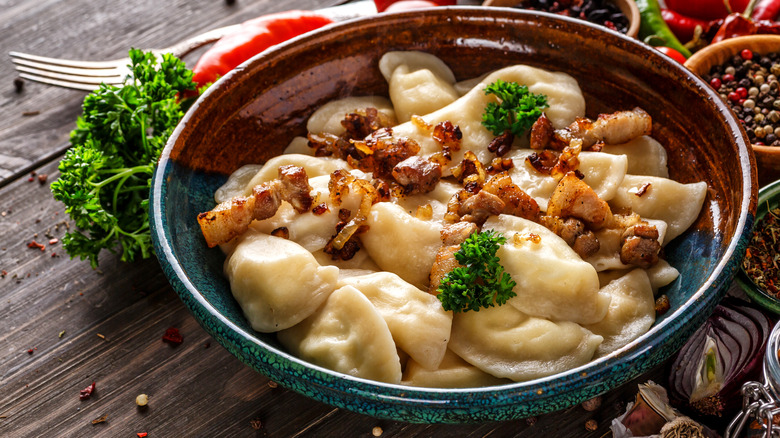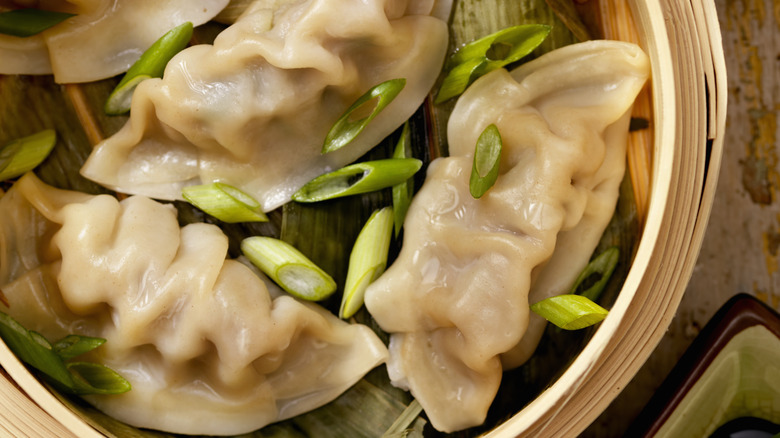The Difference Between Dumplings And Pierogi
Enjoyed by millions of people in myriad forms, dumplings make the world a better place. Most cultures across the globe enjoy dumplings as an indispensable part of their cuisine, so every country has its own version with little twists that give them unique identities. The serving size often determines whether to consider them snacks, appetizers, or the main course.
Sometimes, the differences between any two kinds of dumplings may seem non-existent due to how similar they look. Pierogi, a European-style dumpling that is also a staple in Poland, are often thought to be the same as traditional Chinese dumplings, but they have notable differences in taste, texture, and cooking methods.
A key distinction between pierogi and dumplings is that pierogi are traditionally triangle or crescent-shaped, whereas dumplings come in many shapes and sizes, including crescent. To cook, pierogi are boiled and often sautéed afterward, whereas dumplings are steamed, fried, and can also be boiled. Dumplings are typically served with some kind of dipping sauce, but pierogi are served with melted butter or a sour cream dip and topped with caramelized onions or bacon.
As for the fillings, dumplings lean on the savory side with ground meat, fish, vegetables, or tofu. Pierogi have both sweet and savory versions. Ground meat, potato, cheese with raisins and vanilla, cabbage, and mushrooms are some items used to prepare savory pierogi fillings. Fruits like strawberry, peach, cherry, and berries are used for the sweet variety.
They have been around for centuries
Despite the lack of evidence, it is widely believed that dumplings were invented in Asia. "I'd wildly guess the dumplings were invented in the ancient Near East, but we have absolutely no clue," Eugene Anderson, professor of anthropology at the University of California, told SCMP. Its roots might be obscure, but some of the first known recipes for dumplings date back to the fifth century A.D. when the Roman cookbook Apicius was compiled. According to folklore, Chinese dumplings as we know them were supposedly created by a man called Zhang Zhongjian during the Han Dynasty in China.
Pierogi, too, are thought to have Turkic origins, but some claim it was invented in Eastern Europe. They made their way to Poland in the 13th century, and the recipe was first recorded in a cookbook called "Compendium Ferculorum," which was published in the 17th century. Polish food lore credits Hyacinth, the patron saint of pierogi, for bringing the dumplings to Poland. It is believed he fed pierogi to the Polish people in the aftermath of one of the Tartar attacks.
People eat dumplings and pierogi all year long, but they are also important holiday staples. The Chinese make dumplings during the Chinese New Year because they believe it brings good luck. Similarly, the Polish people eat pierogi during special holidays like Christmas Eve and Easter. Dumplings and pierogi are two unique dishes, but one thing they have in common is that they bring people together.

